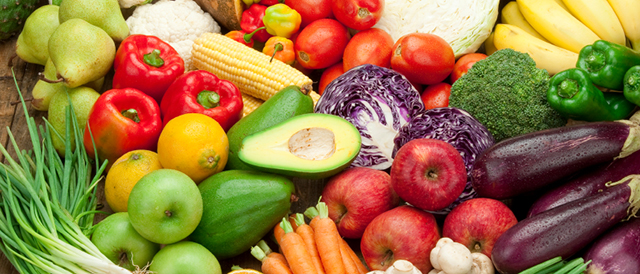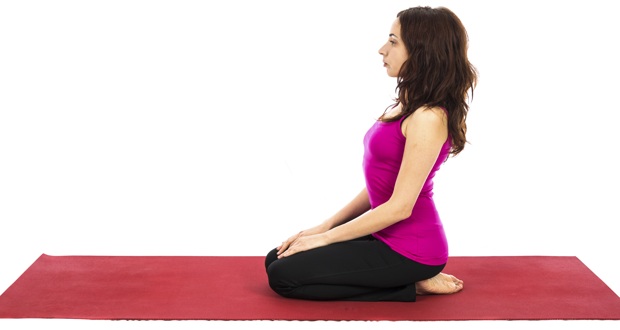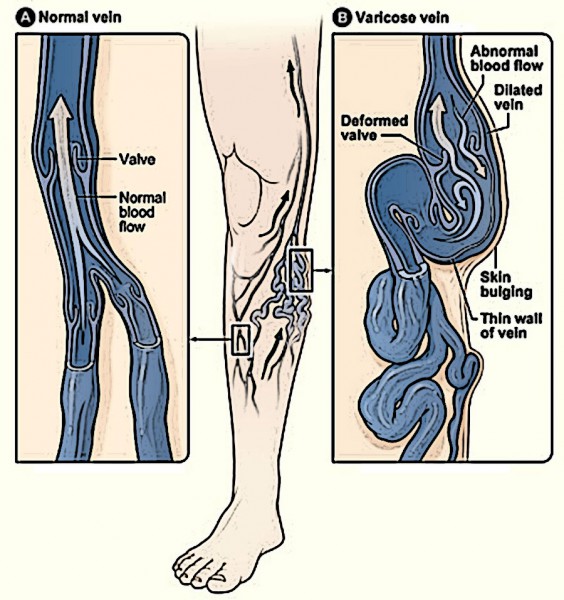
Some natural cold remedies can really knock out your symptoms, but others are all hype. Find out which treatments might work for you.
Most people know there is no real cure for the common cold. According to the Centers for Disease Control and Prevention (CDC), over 200 different viruses can cause the characteristic runny nose, cough, sore throat, and sneezing most people experience at least once per year (CDC, 2009). Most people with cold symptoms have strains of the rhinovirus, but different viruses are more prevalent during certain seasons. Because colds are caused by viruses, antibiotics are ineffective treatments. Furthermore, antiviral medications are not yet sophisticated enough to effectively cure the wide variety of cold viruses. Most people heal without medication in 10 days or less.
Symptoms of the common cold include:
runny or stuffy nose
coughing, sneezing, or sniffling
mild body aches
mild headaches
general feeling of illness (malaise)
If you have any of the following symptoms, promptly consult a physician:
fever higher than 100.4 F
symptoms for more than 10 days
severe symptoms that do not respond to over-the-counter treatments
Instead of curing the condition, most cold remedies just treat the symptoms. People have turned to natural remedies for centuries, trying to prevent, soothe, or shorten the duration of the common cold. Although certain natural cold treatments have considerable scientific support, many have not been well studied or supported by research. Before you try any—or all—of the major natural cold remedies, read up on the pros and cons, risks and benefits, and evidence behind each of the most popular options.
Chicken Noodle Soup
Chicken soup has long been a comfort food for individuals with cold symptoms. Whether the remedy comes from the warmth and comfort of the soup or from actual cold-fighting ingredients in the meal, is still up for debate..
Chicken Soup: Just the Evidence
Science has begun to support what mothers have understood for centuries. The heat, salt, and hydration provided by chicken soup may actually fight the cold virus (NIH, 2012). Laboratory studies have shown that ingredients of a chicken soup with vegetables could kill viral cells and prevent the growth of new ones (Rennard, et al., 2000). The soup may also provide an anti-inflammatory effect in the upper respiratory tract that helps soothe symptoms (Rennard, et al., 2000). Unfortunately, the benefits of chicken soup appear to be limited by how quickly the soup leaves the body (Babizhayev, et al., 2012). There is no indication that chicken soup would help in the prevention of colds, but its use as a remedy for symptoms is common. It is largely a safe remedy with no ill side effects, and scientific evidence points more in favor of its cold-fighting properties than against it.
The Downside of Chicken Soup
Evidence in support of chicken soup’s antiviral properties is not yet solid enough to demonstrate true, reliable medicinal effects. Although the anecdotal evidence and existing research seem to support a therapeutic effect of chicken soup, a clinical trial would be very difficult to perform (Ohry, et al., 1999). In addition, some people with food allergies or sensitivities to salt may experience negative side effects from chicken soup. Unstrained bones may also pose a choking risk, particularly for children. Otherwise, the potential benefits of chicken soup seem to far outweigh the possible risks.
Zinc Supplements, Lozenges, and Sprays
Zinc has been used for decades to calm symptoms, reduce the duration of, and prevent the common cold. The human body uses zinc to support the health of the immune system and the eyes. It is also important for cell health, wound healing, and protein synthesis (ODS, 2011). Zinc can be found naturally in foods such as oysters, beef, beans, and oatmeal. It is also added to enriched grain products like bread and cereal. Only very small amounts of zinc are needed by the body to function properly.
Severalmanufacturers sell zinc lozenges, oral sprays, and capsule supplements. Most zinc lozenges provide up to twice the recommended daily allowance of zinc for children and adults. Consuming a zinc lozenge every two hours when cold symptoms are present is unlikely to cause zinc overdose, however (NIH, 2011).
Zinc: Just the Evidence
The evidence for zinc as a cold remedy is mixed. Decades of research have been inconclusive about the ability of zinc lozenges and supplements to prevent or treat the common cold. Some trials showed a significant decrease in the number and duration of colds per year in individuals taking zinc lozenges and supplements, but others show no difference between zinc and control or placebo groups (Roxas, et al., 2007).
According to the National Institutes of Health’s (NIH) evidence rankings, zinc lozenges are considered “possibly effective” for reducing the length of the common cold (NIH, 2011). The NIH also reports that zinc pill supplements and nasal sprays are probably not useful for preventing colds.
Evidence in favor of zinc lozenges has shown preventive power and a great reduction in the duration of symptoms and absenteeism (Mossad, et al., 2006; Prasad, et al., 2000; Singh, et al., 2011). However, many studies have also shown no real effect of zinc on cold prevention, symptoms, or duration (Macknin, et al., 1998; Marshall, 2000). Zinc nasal sprays and gels have research supporting their effectiveness (Gorman, 1999; Hirt, 2000; Mossad, 2003). Despite their promise, nasal sprays have been criticized for ineffectiveness and occasional permanent or significant negative side effects (Belongia, et al., 2001; Eby, et al., 2006). Overall, zinc lozenges appear to be effective at treating symptoms, but are unproven for preventing colds; zinc nasal sprays have been shown to effectively treat symptoms but have not been thoroughly studied regarding prevention (due to potentially extreme side effects).
The Downside of Zinc
Although studies have shown mixed results on the effectiveness of zinc, there is little controversy over its side effects. Zinc can cause metallic taste, local irritation, nausea, vomiting, diarrhea, and other problems. These side effects are more likely to occur with heavy or frequent zinc supplementation than from single lozenges. Overuse can cause coughing, fever, stomach pains, fatigue, and problems with blood iron levels. In large doses (10–30 gm.), zinc can be fatal (NIH, 2011).
Zinc also interacts with many medications and natural supplements.
Penicillamine, which is commonly used to treat rheumatoid arthritis, can be rendered much less effective when combined with zinc. Zinc can also decrease the body’s ability to use antibiotics, such as quinolone or tetracycline medications. It may also interfere with the cancer drug cisplatin (Platinol-AQ) and cause a zinc overdose when used with the “water pill” amiloride (Midamor). Zinc may interact with supplements of calcium, chromium, copper, iron, magnesium, and manganese.
Warning: Zicam Zinc Nasal Sprays and Loss of Smell
After more than 130 reports of permanent or long-lasting loss of the ability to smell caused by zinc nasal sprays, the FDA issued a recall of Zicam intranasal products (FDA, 2009). These zinc-based nasal spray products were available without a prescription and were used to relieve cold symptoms and the duration of colds. Further research into this serious side effect has confirmed the ability of zinc nasal sprays to cause loss of smell
Echinacea Tea, Juice, Root, and Supplements
Echinacea has long been used in a variety of forms to prevent colds and fight respiratory infections. There are nine species of Echinacea, but the most common variety used for health purposes is Echinacea purpurea (NCCAM, 2010). This herbal remedy has been used for centuries. It was a traditional medicinal plant used by Native Americans and quickly adopted by North American settlers. Proponents believe it helps support the immune system. It is also used to treat skin problems, urinary tract infections, yeast infections, migraines, sexually transmitted infections (STIs), ADHD, and other conditions.
Echinacea: Just the Evidence
Despite its frequent use as a herbal remedy for colds, scientific study on Echinacea has been lacking and contradictory. The National Institutes of Health reports that current evidence suggests Echinacea is “possibly effective” for modestly reducing cold symptoms, but not for preventing colds (NIH, 2011). It is believed that Echinacea has anti-inflammatory and antifungal properties, and stimulates the immune system in animal models (NIH, 2011).
Some research studies do report a positive effect of Echinacea on minimizing the occurrence and severity of colds (Shah, et al., 2007; Schoop, et al., 2006). Others show a total lack of impact of Echinacea on the occurrence or severity of colds (Barrett, et al., 2002; O’Neil, et al., 2008). Because of these conflicting studies, it is hard to claim Echinacea has consistent, beneficial effects on the occurrence, duration, or severity of cold symptoms. In addition, the great variation in Echinacea preparation methods, dosages, and purity makes it difficult to identify the most promising Echinacea supplements for the common cold (Linde, et al., 2006). All in all, Echinacea is a promising candidate for cold prevention through immune system support, and it is believed to reliably relieve cold symptoms.
The Downside of Echinacea
According to the Mayo Clinic, Echinacea can cause allergic reactions in some individuals that can be life-threatening (Mayo Clinic, 2011). People with allergies to the ragweed family (Asteraceae) should avoid Echinacea because of its similar natural properties. Echinacea can also cause stomach discomfort, nausea, muscle aches, dizziness or headaches, sore throat, and rashes. It is not recommended for regular use (no longer than 10 days), and may cause more problems in children than in adults (NIH, 2011).
Echinacea may cause complications in people with autoimmune disorders and is also not recommended for use by pregnant women. Echinacea may also affect how the body breaks down certain chemicals and medicines—individuals on liver medications or immunosuppressants should avoid Echinacea until they can consult a medical professional about potential interaction effects
Vitamin C Supplements and Foods
Famous for its historic use to cure scurvy, vitamin C also has a long past in the prevention and treatment of the common cold. Vitamin C works as an antioxidant that helps body tissue grow and heal itself. It is a water-soluble vitamin that humans must get through food or supplements. Common foods that contain high amounts of vitamin C include bell peppers, citrus fruits, kiwifruit, broccoli, strawberries, and tomato juice (ODS, 2011). Vitamin C is also a common component of multivitamins and over-the-counter cold remedies. It is widely believed to improve general health, speed healing, and fight infection.
Vitamin C: Just the Evidence
According to the National Institutes of Health, vitamin C is considered “possibly effective” for treating the common cold, but is ineffective for preventing it (NIH, 2011). Despite this ranking, reviews of large numbers of studies show mixed results about prevention and treatment (Douglas, et al., 2004; Roxas, et al., 2007). Some demonstrate a positive effect on cold symptoms or frequency (Gorton, et al., 1999; Hemila, 1996; Sasazuki, et al., 2006) and a decreased number of colds in people exposed to extreme temperatures or physical stressors (Douglas, et al., 2007). Others showed no difference in frequency, severity, or duration—even with a mega-dose (Audera, et al., 2001). Because it is nearly impossible to overdose on vitamin C, large doses are often present in over-the-counter cold medicines. Current conflicts in evidence for vitamin C’s effectiveness for cold prevention and treatment make it difficult to endorse as a true remedy to colds. However, vitamin C is considered very safe for most people and is unlikely to cause any harm when used for colds. Overall, many users swear by vitamin C supplements for cold prevention, and evidence suggests it shows some effectiveness as a treatment.
The Downside of Vitamin C
Vitamin C is typically considered safe, even in sizeable doses. Side effects of vitamin C use by mouth are rare. They include nausea, vomiting, headache, cramps, and heartburn. Doses over 2000mg per day can cause kidney stones and diarrhea (NIH, 2011). In addition, people with heart conditions, cancer, diabetes, blood disorders, and kidney stones should always consult a physician before taking vitamin C supplements.
Vitamin C can also interact with certain medications and natural supplements. Vitamin C may interfere with drugs for heart conditions, cancer, HIV/AIDS, blood clotting, and pain. It may also interact with drugs with estrogens and aluminum. High doses of vitamin C can cause problems for some people when taken with acerola, chromium, copper, grape seed, or rosehip (NIH, 2011). Most people can take vitamin C through food or dietary supplements without any side effects.
Goldenseal Root
Goldenseal is a root used for its purported medicinal properties. The dried root is most famous for its supposed ability to mask illegal drugs in urine (for which it is not actually effective). It is also used to battle STIs, urinary tract infections, bleeding problems, jaundice, upper respiratory infections, hearing problems, and skin problems (NIH, 2011). It is often found in the form of tea, supplements, and over-the-counter remedies.
Goldenseal Root: Just the Evidence
Despite its many uses, there is not enough reliable evidence to suggest goldenseal is effective for any of its common medical uses. Limited research supports the medical effect of berberine, a compound in goldenseal. Berberine may possess significant antibiotic properties (Kong, et al., 2012) and antiviral abilities (Wu, et al., 2011).
Unfortunately, virtually no research has been performed on goldenseal use for the common cold. A lack of research does not mean that goldenseal does not improve symptoms of respiratory infections. Instead, it just means that not enough is known about goldenseal’s ability to fight or prevent the common cold to recommend its use.
The Downside of Goldenseal Root
Although not much evidence supports the use of goldenseal for fighting colds, there is plenty of information known about its downsides. Although it is considered safe for most adults in a single dose, pregnant or breastfeeding women and infants should not take goldenseal in any form. Goldenseal can negatively impact the effects of a large variety of medications. Known interactions exist with medications for organ transplants, mental health conditions, heart problems, infections, cancer, and many other illnesses. Goldenseal has not been studied enough to know whether it may interact with other herbal supplements or foods. Always ask a physician or pharmacist about goldenseal before taking it in any form.
Garlic:
Garlic is an edible herb that has long been used to flavor food and treat a variety of common health conditions. Eating garlic and taking supplements has been shown to be effective for high blood pressure, fungal skin infections, tick bite treatment, and prevention of certain cancers (NIH, 2011). It is also used for many other health conditions, such as diabetes, high cholesterol, and the common cold. It is available as a potent food flavor in fresh, dried, jarred, oil, paste, and powdered forms. It is also sold in supplements. The odor of garlic is caused by its active compound, allicin; odorless supplements often remove this active compound and may be less effective (NIH, 2011).
Garlic: Just the Evidence
Although some research suggests that garlic is effective in reducing blood pressure and healing fungal skin conditions, the National Institutes of Health report that there is “insufficient evidence” to tell whether garlic effectively treats or prevents the common cold (NIH, 2011). Despite this rating, a few studies have found that garlic supplements may prevent colds and reduce their severity when they occur (Josling, 2001; Nantz, et al., 2012). Other reviews argue that existing research is not solid enough to support any positive effect of garlic on colds (Lissiman, et al., 2012; Nahas, et al., 2011; Pittler, et al., 2007). Although there is no solid reason to believe that garlic does not work, the evidence is either too weak or mixed to conclude that it is helpful in preventing or treating the common cold.
The Downside of Garlic
Although garlic is generally considered safe for regular use in your diet or as a supplement, there are some possible side effects. Many people may get bad breath from oral garlic use. In addition, some people may get heartburn, nausea, vomiting, diarrhea, gas, or body odor. People who are undergoing surgery should stop taking garlic two weeks prior to the surgery, as garlic may prolong bleeding. You should also avoid if you suffer from a bleeding disorder, or gastrointestinal problems (NIH, 2011). Children and pregnant women should not consume garlic in large amounts due to possible complications.
Raw garlic is more likely to cause side effects than other forms. In addition, garlic may interact with many medications. It may decrease the effectiveness of drugs for bleeding disorders, HIV/AIDS, tuberculosis, and a number of other conditions. Garlic may even reduce the effectiveness of birth control pills that contain estrogen (NIH, 2011). Because garlic may slow blood clotting, it may increase the risk of bleeding when taken with other supplements that have similar properties. These include fish oil, ginger, ginkgo, turmeric, vitamin E, and willow (NIH, 2011). Always consult a health professional before taking garlic supplements or significantly increasing the amount of garlic you eat.
American Ginseng Root
North American ginseng (Panax quinquefolius) has long been used for its medicinal properties. This herb has different effects from its Siberian and Asian cousins. American ginseng has been traditionally used for a wide variety of ailments. In addition to treating cold and flu, this form of ginseng is used in an effort to relieve stress, improve digestion, boost the immune system, enhance memory, battle HIV/AIDS and cancer, manage diabetes, and even prevent signs of aging. The root can be used to make powdered supplements or oils and extracts (which can be added to food or drinks).
Ginseng: Just the Evidence
Ginseng has been studied more than many other natural cold remedies. According to the National Institutes of Health, American ginseng is “possibly effective” for preventing colds and flu viruses (NIH, 2011). Research does indicate that ginseng supplements may reduce the frequency, severity, and duration of the common cold (McElhaney, et al., 2006; Predy, et al., 2005; Seida, et al., 2011). It is unclear whether it is equally effective in children (Vohra, et al., 2008). The ability of American ginseng treatments to fight the common cold is likely due to polysaccharides, ginsenosides, and an active compound named CVT-E002 (NIH, 2011).
This extract has already been added to over-the-counter cold remedies, such as Cold-fX, which have been met with much commercial success. According to the National Institutes of health, Siberian ginseng is “possibly effective” for relieving cold symptoms, but it must be taken with the herb andrographis (NIH, 2011). Overall, American and Siberian ginseng collectively appear to be a reasonable remedy for cold prevention and treatment.
The Downside of Ginseng
Unfortunately, ginseng can cause serious side effects and drug interactions in some people. Even with short-term use, ginseng may cause blood pressure changes, low blood sugar, diarrhea, itching, sleep problems, headaches, and nervousness. It can also cause vaginal bleeding, rashes, and allergic reactions (NIH, 2005).Pregnant and breastfeeding women should not take ginseng.
Schizophrenics, people about to have surgery, patients with gynecological cancers, people on the blood-thinning drug warfarin (Coumadin), and insomniacs may be at risk of harm from ginseng use. Diabetics and people using anti-depressants should also carefully discuss ginseng use with a physician before taking supplements.
Nasal Irrigation
Nasal irrigation finds its origins in Ayurvedic medicine. Typically, a saline (saltwater) solution is used to rinse the sinuses. Saline nasal irrigation is commonly used to alleviate or prevent symptoms of congestion and inflammation in people with allergies or frequent sinus infections. Because this process can reduce swelling of mucus membranes and clear the sinuses of build-up, many people also believe it helps prevent colds and treat their symptoms. Saline nasal irrigation kits are sold without a prescription at most drug stores. A warm saline solution is poured from a syringe or a teapot-like container through each side of the nose, draining out the other nostril (Blum, 2009).
Saline Nasal Irrigation: Just the Evidence
Major reviews of existing research have shown that nasal irrigation can be effective at relieving symptoms of sinusitis or rhinitis in patients with persistent problems (Harvey, Hannan, Badia, & Scadding, 2009). It was found to be even more useful when paired with other treatments, like decongestant medication or antibiotics. Although people with colds may have many symptoms in common with those experiencing rhinitis (stuffy or runny nose, sinus swelling, etc.), a similar review did not find enough evidence suggesting nasal irrigation effectively treats colds or other upper respiratory infections (Kassel, King, & Spurling, 2010). Despite few studies on the topic, this review did cite studies that found nasal irrigation relieved symptoms, helped get people back to work sooner, and reduced the use of antibiotics. A more recent review of nasal irrigation studies did find that people experienced symptom relief, even with a variety of saline concentrations and techniques (Khianey & Oppenheimer, 2012). Unlike some other natural cold remedies, nasal irrigation is considered mild and safe for use in pregnant women and children.
A recent study even found a significant reduction in respiratory infections among children using nasal irrigation as a preventive measure (No authors listed, 2012). Overall, nasal irrigation looks like a promising natural cold remedy, but current evidence is a bit too weak to say the same for its ability to prevent colds. With proper education on use of the irrigation kit, most people experience no side effects.
The Downside of Nasal Irrigation
Side effects of saline nasal rinses include mild discomfort, anxiety about the process, and occasionally dry nasal membranes. When the irrigation process is performed incorrectly, patients may feel as if they got water up the nose (as if from swimming). If the saline packet is not correctly mixed with enough water, a high salt concentration can cause nasal discomfort. Most side effects are associated with the first few uses, when the patient is learning the process. Most people do not experience any negative side effects (Rabago, et al., 2002). Those that do have an unpleasant experience can usually fix the problem by getting help from a health worker to improve their technique (Rabago & Zgierska, 2009). Fortunately, saline irrigation can often be paired with other remedies without side effects.
Meditation and Mindfulness
Meditation is an ancient method of restoring spiritual balance and emotional perspective to life. It is now often used to encourage physical health and to promote relaxation and stress reduction. In recent years, research has discovered the power of meditation and mindfulness strategies to promote mental health and even aid in healing. Meditation and mindfulness sessions may have a wide variety of health and personal benefits.
The techniques are free, natural, and do not require any special equipment. These factors make meditation and mindfulness strategies a simple and appealing option for a cold remedy. Yoga is a common way to use physical motions and focus on the breath to achieve a state of meditation.
Meditation and Mindfulness: Just the Evidence
Unfortunately, very little research has examined the link between meditation and the common cold. Some evidence suggests meditation and mindfulness exercises may improve immune function (Davidson, et al., 2003). Another study found that meditation did reduce the severity and duration of respiratory infections as well as the number of days off work compared to individuals who did not exercise or meditate (Barrett, et al., 2012). A similar study found that greater effectiveness at mindfulness meditation was associated with a shorter duration of acute respiratory infections (Zgierska, et al., 2012).
Yoga has been shown to provide health benefits and some improvement in immune function, but no research has explicitly linked yoga to the prevention or treatment of colds. Certain yoga poses are recommended for their potential benefit to individuals with colds, however (Pirisi, n.d.). Although there is little research to support a clear benefit of meditation for preventing or treating colds, the National Center for Complementary and Alternative Medicine reports that meditation can be helpful in fighting chronic illness, reducing anxiety or depression, relieving pain and fatigue, and improving sleep (NCCAM, 2010). Little direct research supports a connection to cold treatment, but indirect evidence of their effects on fatigue, pain, and immune function make meditation and mindfulness promising habits for cold prevention.
The Downside of Meditation and Mindfulness
As benign as a period of relaxation and disconnection may sound, long-term meditation is not without potential negative side effects (Shapiro, 1992, Mayo Clinic, 2011). In general, side effects such as loss of ability to concentrate or a worsening of psychiatric illness are believed to be rare. Some individuals may also find meditation and mindfulness exercises frustrating if they are unfamiliar with proper techniques or do not believe the therapy will work (Jain & Astin, 2001). Meditation proponents often cite zero negative side effects of meditation and mindfulness (Edy, n.d.). Yoga may carry physical side effects, muscle strain, or physical discomfort in certain poses or when proper physical form is not used. Yoga may also pose risks for pregnant women and people with uncontrolled high blood pressure, balance problems or severe osteoporosis, artificial joints, or certain eye problems (Mayo Clinic, 2010). While meditation and mindfulness remain unverified methods of cold treatment and prevention, side effect prevalence will likely also go undocumented.
Exercise
Exercise is widely considered an essential part of a healthy lifestyle. Because of its benefits for the lungs, muscles, and circulation, regular exercise promotes healthy body systems. Exercise is believed to help individuals develop and maintain a strong immune system, which may help prevent colds. Exercise fans and athletes also may maintain their exercise routines when sick with the hopes that it will help them recover faster (or at least make no difference in the severity or duration of their illness).
Exercise for Colds: Just the Evidence
Although there is a large body of evidence behind the claim that exercise is beneficial for health, the research regarding exercise as a treatment or prevention method for colds is less well developed. Reviews of the evidence suggest a moderate level of exercise may help prevent upper respiratory infections (Martin, Pence, & Woods, 2010; Weidner & Sevier, 1996). On the other hand, intense levels of exercise may suppress the immune system and make individuals more prone to colds and other respiratory infections (Kippelen, et al., 2012; Nieman, 1995). Regular exercise has also been shown to reduce the number of missed workdays and illness from the common cold (Barrett, et al., 2012). Other studies indicate that exercise may not decrease the severity or duration of a cold but that exercise can be continued during cold symptoms without a negative impact (Weidner & Schurr, 2003). In general, moderate exercise during a cold is not likely to improve symptoms but is also unlikely to extend the illness (Laskowski, 2011), and it is a promising strategy for cold prevention.
The Downside of Exercise
Beyond the standard physical risks of exercise, exercising during an illness may cause some side effects. Moderate exercise is often well tolerated for individuals with a cold virus, but less strenuous workouts may be easier on the body. Because many cold viruses are not formally diagnosed, it is possible for people to misdiagnose themselves. Exercising with an infection more serious than the common cold can cause serious health problems. Always scale back or skip workouts if exercise makes you feel worse during an illness.
Do not exercise during a cold-like illness if you have any of the following symptoms (Laskowski, 2011):
fever
extreme fatigue
widespread muscle aches
chest congestion or a hacking cough
nausea
Green Tea Beverages and Supplements
Green tea has been heralded for its ability to enhance alertness, fight blood pressure problems, speed weight loss, and perform many other medical feats. Despite limited research behind many of its health-related claims, green tea has long been used as a beverage and extract. Green tea (Camellia sinensis) and green tea extracts have been shown to possess potent compounds that can impact human health, such as antioxidants, polyphenols, and caffeine. Green tea extract is used in an ointment for genital warts, and its other (non-medication) applications include the prevention and treatment of dental, heart and circulatory, cancer, skin, and digestive problems (NIH, 2011).
Green Tea: Just the Evidence
Green tea has not been widely studied with regards to its ability to prevent or treat respiratory infections. Some promising research indicates green tea supplements (in capsule form) may prevent some illness and cold and flu symptoms (Rowe, Nantz, Bukowski, & Percival 2007). The organic compounds in green tea may also have antiviral properties that can help fend off influenza strains (Friedman, 2007; Matsumoto, Yamada, Takuma, Niino, & Sagesaka, 2011; Song, Lee, & Seong, 2005). Drinking hot liquids in general during a cold may also temporarily relieve nasal congestion (Saketkhoo, Januszkiewicz, & Sackner, 1978). Overall, drinking green tea to prevent or treat the common cold appears to be a promising habit, but more research is needed.
The Downside of Green Tea
Temporary and long-term use of green tea as a beverage or supplement is likely safe for most adults. Some people may experience minor stomach upset or constipation from green tea use. Because of the caffeine and other active compounds in the tea, it may also cause more serious side effects in some people (NIH, 2011). Individuals who are pregnant, anemic, hypertensive, or diabetic should consult a health professional before using green tea as a beverage or supplement. In addition, those with blood disorders, liver conditions, Irritable Bowel Syndrome (IBS), or anxiety disorders should probably avoid green tea unless told otherwise by a health professional. Green tea may also interact negatively with common medications, such as birth control pills, antibiotics, and drugs for cancer, liver, and asthma problems(NIH, 2011). Always consult a physician before taking green tea if you use any other medications.
Warning: Green Tea and Stimulant Drugs
Green tea contains caffeine, which speeds up the nervous system. Drugs such as amphetamines, cocaine, and ephedrine also act as stimulants to the nervous system. Combining any stimulant drug with green tea or other caffeinated substances can cause too much stimulation and potential heart problems (NIH, 2011). Together, green tea and stimulant drugs can cause a dangerously fast heartbeat and high blood pressure.
Whiskey and Hot Toddies
Whiskey and strong alcoholic beverages have long been used to fight infections and prohibit the growth of microorganisms (Ali, Dolan, Fendler, & Larson, 2001). Even today, it is used in antibacterial hand gels and mouthwashes to kill germs and prevent illness. Drinking a shot of whiskey or adding it (or bourbon, rum, or scotch) to a hot toddy recipe is frequently used to treat colds. Most hot toddy recipes include hot water, a shot of alcohol, fresh lemon, and a spoonful of honey. Alcohol is also an ingredient in many over-the-counter cough syrups.
Whiskey and Hot Toddies: Just the Evidence
Although its effects on colds are largely anecdotal, whiskey and its hot toddy cousin may have something to their merit. Moderate alcohol intake on a regular basis has been linked to improved lung function (Siu, Udaltsova, Iribarren, & Klatsky, 2010). It has also been associated with fewer colds, except among smokers (Cohen, Tyrrell, Russell, Jarvis, & Smith, 1993). Research is still mixed about the effects of alcohol on inflammation and the immune system, but in moderate amounts it is unlikely to cause any negative side effects for immunity (Romeo, et al., 2007; Watzl, et al., 2004). In general, moderate alcohol use is unlikely to negatively impact the frequency or severity of colds. There is no strong scientific evidence at present that suggests alcohol intake during a cold can fight symptoms or reduce the length of illness. Hot toddies may be effective for treating symptoms due to the hot liquid and honey
The Downside of Whiskey and Hot Toddies
Excessive alcohol intake is associated with a large number of negative health conditions (Rehm, n.d.). Pregnant women and children should not consume alcohol (NIH, 2012). Alcohol can become addictive and may, in large doses, be fatal. It can also cause stomach upset, gastrointestinal discomfort, and vomiting in some individuals. Anyone with a personal or family history of alcoholism should not use alcohol to treat cold symptoms. Alcohol can also interact with other drugs in dangerous ways; always consult a physician before drinking alcohol when taking other medications.
Lemon and Honey
Lemon and honey have many natural properties that make them common sense cold fighters. Lemon is acclaimed for its vitamin C and antimicrobial properties (Dhanavade, Jalkute, Ghosh, & Sonawane, 2011; Efem & Iwara, 1992). Lemon may be used for its juice, peel, or extracted oil. Honey is treasured for its sweet taste, potential to fight seasonal allergies, and its broad range of antimicrobial properties. Together, they are often used in hot water or tea to aid cold symptoms. In addition, their flavors are a classic combination for throat lozenges.
Lemon and Honey: Just the Evidence
Both honey and lemon have significant ability to inhibit the growth of microbes that can cause infection (Dhanavade, Jalkute, Ghosh, & Sonawane, 2011; Efem & Iwara, 1992). The vitamin C in lemon may strengthen the immune system or help treat cold symptoms (NIH, 2011). Honey may also contain antiviral properties that could inhibit viral activity from colds (Zeina, Othman, & Al-Assad, 2007). In addition, a growing number of studies have found honey to be an effective cough suppressant and sleep aid during a cold, especially in children (Cohen, et al., 2012; Paul, et al., 2007). Some evidence does suggest that honey may not be better than over-the-counter dextromethorphan cough suppressants, although honey has no scientific evidence that argues against its use (Oduwole, Meremikwu, Oyo-Ita, & Udoh, 2012). Overall, there is insufficient evidence to believe lemon and honey can shorten the duration of a cold, but honey has promising evidence demonstrating its possible effectiveness in relieving certain symptoms. There is insufficient evidence to suggest lemon or honey can prevent the common cold.
The Downside of Lemon and Honey
Wild honey may contain spores of Clostridium botulinum. When ingested by infants, these spores and their toxins can cause serious health problems and—if left untreated—death (NIH, 2011; Tanzi & Gabay, 2002). For this reason, children under 12 months of age should not be given honey. Large doses and extended use of lemon juice provide large amounts of citric acid, which may cause the erosion of tooth enamel, nausea or vomiting, and eye or skin irritation upon contact (ISU, 2000). Otherwise, lemon and honey are both considered safe for regular consumption by children and adults.
Probiotics
In a way, probiotics have been used for health for many centuries. Historically, fermented milk products were associated with good health and long life (Fuller, n.d.). Although formal research did not explore the connection between fermented dairy products and gastrointestinal health until about 1900, they were deliberately used to promote good microbes in the gut by the 1930s (Azizpour, et al., 2009). Probiotics are currently used to prevent diarrheal illness and symptoms of Irritable Bowel Syndrome (Kligler & Cohrssen, 2008). They are also under investigation for their alleged ability to protect against cavities, treat skin problems, aid in the treatment of arthritis, and speed healing of gastrointestinal cancers (Goldin & Gorbach, 2008). Most probiotic supplements include lactobacillus and bifidobacteria in a dairy drink or yogurt.
Probiotics: Just the Evidence
Although there is limited research on the topic, probiotics may be helpful in preventing and treating respiratory infections (Leyer, Mubasher, Reifer, & Ouwehand, 2009). The evidence is mixed regarding its effectiveness in cold prevention, but probiotics have generally decreased the number of respiratory infections among regular users in studies (Hao, Lu, Dong, Huang, & Wu, 2011). The National Institutes of Health report there is “insufficient evidence” to determine whether probiotics are effective for preventing or treating the common cold; however, they are “possibly effective” for treating the symptoms of and preventing lung infections (NIH, 2011; NIH, 2011). Overall, there is only weak evidence suggesting that probiotics are useful in treating the common cold, though they may be a promising prevention technique because of a general boost to health.
The Downside of Probiotics
Although probiotics are generally considered safe for adults and children, some people may experience negative side effects. Probiotics can cause gas, bloating, and stomach discomfort, and they should probably not be used by pregnant women or people with weakened immune systems (NIH, 2011). Probiotics may also interact with antibiotics and immunosuppressants, so consult a doctor before using probiotics when on other medications
Vitamin D and the Sun
Vitamin D can be found naturally in some seafood, but it is often added to fruit juices and grain products. Most people get the vast majority of their vitamin D from the sun, which helps the body produce its own. It is essential for bone health, and is also used to promote heart, circulatory, skin, lung, oral, muscle, and immune health (NIH, 2012). Many people do not have adequate levels of vitamin D in their systems, especially during the winter (Holick, 2006). Vitamin D deficiency can cause rickets and other health problems.
Vitamin D: Just the Evidence
According to the National Institutes of health, vitamin D is “possibly effective” at preventing respiratory infections (NIH, 2012). There is currently insufficient evidence to determine whether vitamin D really prevents or treats the common cold. Some research indicate that vitamin D supplementation has antiviral effects (Cannell & Hollis, 2008), but not enough is known about its antiviral strength to use it to specifically target cold, flu, or other viruses (Khoo, et al., 2012; Yamshchikov, Desai, Blumberg, Ziegler, & Tangpricha, 2009). In general, adequate vitamin D levels may help prevent respiratory problems like the common cold (Cannell, et al., 2006), but it has not been studied enough regarding treatment to comment on its remedy power.
The Downside of Vitamin D and Sunshine
Most people are not at risk of getting too much vitamin D. In high doses, however, vitamin D supplements can cause fatigue, weakness, nausea and vomiting, headache, metallic taste, and loss of appetite. Vitamin D supplementation can also have a negative interaction with certain medications for the heart, kidneys, blood pressure, and other health conditions (NIH, 2012). Always check with a physician before beginning vitamin D supplementation in combination with any other medication. Side effects from safe sun exposure for vitamin D are typically mild. Extended or excessive exposure to the sun can cause a number of other problems, such as sunburn, skin damage, heat exhaustion, vomiting, and even skin cancer.
Camphor, Eucalyptus, and Menthol
Camphor, eucalyptus, and menthol are often combined in ointments and medicines. Camphor is often used in topical pain relievers and muscle ache creams. Eucalyptus leaf or oil is used both as a food flavoring and in many medicinal applications. Eucalyptus is used to treat breathing problems, pain and inflammation, burns and ulcers, and even cancer. Menthol can be used as flavoring in lozenges for sore throats and coughs or as a soothing ingredient in anti-itch creams and medications for the mouth. The three are often combined in over-the-counter ointments used for nasal congestion and cough suppression
Camphor, Eucalyptus, and Menthol: Just the Evidence
Although these three ingredients effectively relieve the sensation of a stuffy nose in many people, there is insufficient evidence to suggest that they effectively treat cold symptoms (Burrow, Eccles, & Jones, 1983; Eccles, 2003). Eucalyptus may also help break up mucus and ease congestion (NIH, 2012). These ingredients provide a cooling, soothing sensation, but their effect on inflammation in the nose and throat is unclear (Meltzer, Caballero, Fromer, Krouse, & Scadding, 2010). Many people do report temporary relief of certain symptoms, but there is not enough evidence to suggest that these three ingredients effectively treat or shorten colds. There is no evidence to suggest that these ingredients prevent colds.
The Downside of Camphor, Eucalyptus, and Menthol
These three ingredients are not recommended for long-term use or excessive use during colds. Too much skin or oral exposure can cause camphor or menthol overdose or poisoning, especially in children (NIH, 2011; NIH, 2012). Eucalyptus can also cause negative side effects; it should not be used in combination with other herbal remedies and a large number of medications because of potentially toxic interactions (NIH, 2012). Eucalyptus may result in nausea, vomiting, or diarrhea in some people. Oral overdoses of these remedies can result in death. Children and pregnant women should not use cold remedies containing these ingredients.
High Lactoferrin Whey Protein
Whey protein is naturally found in milk products. It is easily digested by most people and commonly used as a supplement to promote muscle growth and even prevent diabetes (Mayo Clinic, 2011). Recently acclaimed for its anti-inflammatory and allergy prevention properties, high lactoferrin whey protein is also believed to boost the immune system and hold antiviral properties
High Lactoferrin Why Protein: Just the Evidence
Research has begun to promote high lactoferrin whey protein for its anti-inflammatory capacity and antiviral potential (Conneely, 2001; Vareille, Kieninger, Edwards, & Regamey, 2011). Other research also indicates that milk and its lactoferrin protein may help prevent a variety of viral infections (Arnold, et al., 2002; Krissansen, 2007) and promote immune system strength (Berlutti, et al., 2011). Despite some research in its favor, there is not yet enough evidence to suggest that high lactoferrin whey protein supplements are effective at preventing the common cold. There is no evidence to help determine its cold symptom treatment potential at this time.
The Downside of High Lactoferrin Whey Protein
People with milk allergies or sensitivities may suffer severe allergic reactions to whey protein supplements. Whey protein can also cause changes in blood pressure, blood sugar levels, medication effects, bleeding, and the effects of other herbs and supplements (Mayo Clinic, 2011). Infants and women who are pregnant or breastfeeding should not take whey protein supplements unless advised to do so by a doctor. Whey supplements are not recommended for long-term use, as they can cause kidney damage and bone loss. In adults without allergies, whey protein supplements are considered safe for short-term use.
Elderberry (Sambucus Nigra)
There are many varieties of elderberry plants, but European Elder (Sambucus nigra) is most often used to treat pain, swelling, skin problems, infections, fevers, constipation, and coughs (NCCAM, 2010). It is also used in its cooked form in syrups, drinks, and as a flavoring for foods. The dried flowers or cooked berries are also used in teas, capsule supplements, and liquid extracts.
Elderberry: Just the Evidence
Limited scientific evidence suggests that elderberry may have antiviral properties and the ability to fight strains of the influenza virus (Roxas & Jurenka, 2007; Zakay-Rones, Thom, Wollan, & Wodstein, 2004). It may also benefit the immune system to help fight the symptoms and the duration of viral infections (Barak, Halperin, & Kalickman, 2001; Barak, Birkenfeld, Halperin, & Kalickman, 2002). Despite the promising evidence for its assistance in cold symptom relief, there is not enough evidence to suggest that elderberry (in any form) is effective at preventing colds.
The Downside of Elderberry
The uncooked berries of the elder plant can be toxic, causing severe diarrhea, nausea, and vomiting (NCCAM, 2010). In addition, the flowers of the plant can cause diarrhea and stomach upset in some people. It is not recommended for use in children or pregnant women. Always ask a physician about elderberry extract or supplementation before use, as it may interact negatively with some medications.
Olive Leaf Extract (Olea Europea)
Olive leaf extract is taken from the leaves of the olive tree. Extract from the olive leaves has long been used medicinally for respiratory illness, asthma, arthritis, high blood pressure, eczema, and other problems (Braun, 2005). Research is increasingly examining olive leaf for its powerful medicinal properties.
Olive Leaf Extract: Just the Evidence
There is insufficient evidence to claim olive leaf extract is effective at preventing or treating colds. It has been shown in a few studies to reduce the infectivity of viruses and to stimulate the immune system’s response to infection (Micol, et al., 2005; Roxas & Jurenka, 2007). Different forms of the leaves may also be anti-inflammatory, which may aid in decongestion (Eidi, Moghadam-kia, Moghadam, Eidi, & Rezazadeh, 2012; El & Karakaya, 2009). Little or no research has been performed linking olive leaf extract use to the prevention or treatment of the common cold.
The Downside of Olive Leaf Extract
Although olive leaf extract has not been well evaluated for side effects in humans, manufacturers cite a variety of possible negative reactions. Side effects from use of the extract may result in stomach discomfort, flu-like symptoms, headache, vomiting, and diarrhea. Although olive leaf extract is generally believed to be safe, pregnant women and children are advised to avoid its use except under a physician’s supervision.
Source: health line











 Varicose veins are the superficial venous system disease. With associated symptoms and complications they make the most frequent disease of the blood vessels of the legs.
Varicose veins are the superficial venous system disease. With associated symptoms and complications they make the most frequent disease of the blood vessels of the legs.